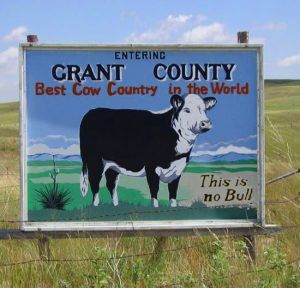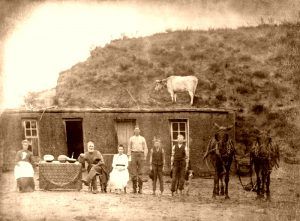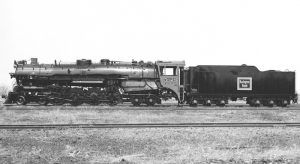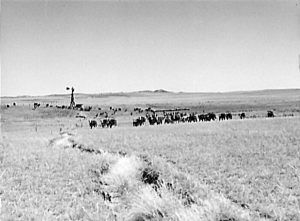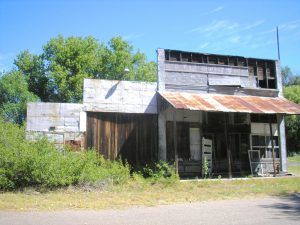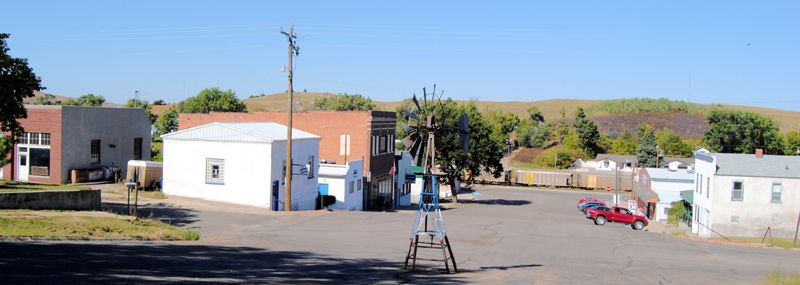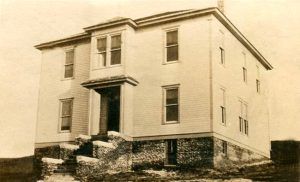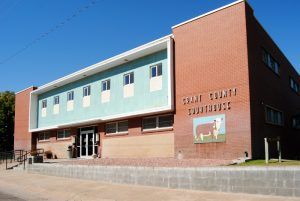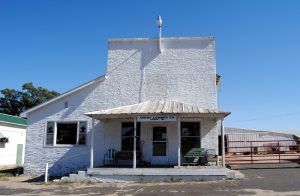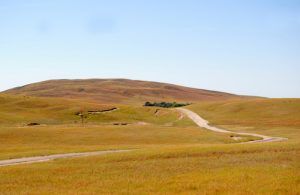In the western portion of the state, Grant County, Nebraska is the 9th least populous county in the United States. Sprawling across the Nebraska Sandhills, the county encompasses 783 square miles but is home to only about 650 people. It boasts only three towns, including Ashby, Whitman, and Hyannis, the county seat, all located on Nebraska Highway 2, in the northern portion of the county.
Before American settlers began to make their way to the area, the region was utilized as hunting grounds by Native Americans and the feeding ground of the native buffalo. When early explorers traveled through, they spoke of the region as “the Great American Desert.” Later, Buffalo Bill Cody and Pawnee Indian scout Lute North were credited for successfully clearing the sandhills of hostile Indians.
Early American settlers saw the rolling hills filled with grasses and the many shallow lakes in the low-lying valleys as an opportunity to establish homesteads. Due to the lack of trees in the area, they lived in dug-outs or built sod houses. However, they quickly found that the sandy soil made the area unsuitable for cultivating crops and was unprepared for the changing temperatures and the variety of hardships of this region, including prairie fires, outlaws, hostile Indians, and blizzards.
The area that would later become Grant County was surveyed in October 1876, in which the south-central area of Grant County was described as “worthless sandhills.”
The summer of 1877 saw the first herds of Texas longhorns moving slowly into the north over the old Abilene and Chisholm Trails. Numerous cowboys, who trailed herds for the big cattle companies, saw for the first time the sandhills and recognized their perfection as a cattle range. This fame spread, and the sandhills became known as “God’s Own Cow Country.”
One drawback to the settlement of the area in these early days was the lack of local governmental authority. This region became a favorite hiding place for outlaws and fugitives from justice. Cattle rustlers were common, and ranchers had no protection against them. In 1886 Governor John Thayer took action against the criminals by appointing R. M. “Bud” Moran to clean up the territory. Initially, Moran was made Territorial Sheriff of the Sandhills and soon posted warnings to cattle rustlers and other dangerous characters. Before long, Moran broke up the outlaw gangs and captured such dangerous characters as the Cherokee Kid and others. Moran would serve in a sheriff capacity in Nebraska for 21 years before he finally retired and went into the cattle business and owned a 25,000-acre ranch, one of the largest in the state.
In 1886-1887, the Chicago, Burlington & Quincy Railroad extended its line from Broken Bow, Nebraska into the Sandhills and established a terminal station just inside Grant County. The station and the settlement that would form around it was called Whitman. That same year, the county was founded from unorganized territory in March, named for President Ulysses S. Grant, and Whitman was made the new county seat.
In 1888, the Chicago, Burlington & Quincy Railroad extended its line from Whitman to Alliance, Nebraska, and two new towns were established in Grant County — Hyannis and Ashby.
By this time, many new settlers had filed land claims in Grant County and found several problems with the original land survey made in 1876. Their issues included section corners that could not be found, land claims that often overlapped, and landforms represented on the original survey that were frequently incorrect. Area residents then began to demand a new survey be conducted, but it would be years before one occurred in 1895. At that time, the new survey showed that the first one contained obvious errors, even deliberate falsification, which had caused problems in settlement of the county. The new survey found that hills existed where valleys had been mapped in 1876, and valleys and marsh existed where rolling topography was mapped in the original survey.
By 1900, Grant County was called home to 763 people. In 1904, the Kinkaid Act allowed homesteaders to claim 640 acres, rather than the 160 acres allowed by the 1862 Homestead Act. This brought many more people to the area, and some of them attempted to farm the land again, but these attempts generally failed. The cattle industry, however, continued to thrive, and the sandhills supported over 530,000 cattle. This industry would also decline when many of the largest ranches broke up when regulations were enacted against fencing federal rangelands.
Grant County’s population peaked in 1920 at 1,486 and over the decades continually dropped to today’s level of about 650, less than one person per square mile.
The 272-mile Sandhills Journey Scenic Byway runs along State Highway 2 from Grand Island to Alliance through Grant County. The Nebraska Sandhills region is the largest area of stabilized sand dunes in the western hemisphere, encompassing more than 13 million acres, an area about as large as Vermont, New Hampshire, and Rhode Island combined. Along the byway, visitors will drive through a sea of gentle slopes, curves, wind-blown undulating dunes, native grass, and vivid blue lakes. Abundant wildlife can also be seen along the byway, passing by a section of the Nebraska National Forest, interesting rock formations, some ghost towns, and numerous small communities, including Whitman, Hyannis, and Ashby in Grant County. The Nebraska Sandhills were designated a National Natural Landmark in 1984.
Heading west through Grant County, the byway first makes its way to Whitman, the first settlement established in the county.
Whitman
Whitman, Nebraska, was established in 1887 when the Chicago, Burlington & Quincy Railroad came through and built a terminal station named after the town of Whitman, Massachusetts, by a railroad official. The same year, the town gained a post office, and when Grant County was formed, Whitman became the county seat. However, this would last but a short time because residents of nearby Hyannis felt they were more centrally located and petitioned that the site be changed. An election was held, and Hyannis won. When a delegation went to Whitman for the county record books, Whitman residents refused to turn them over, and two determined young men took them by force. This fight over the county seat location caused bitter feelings between the two towns that lasted for many years.
In the beginning, Whitman was a tent city with stores, dance halls, saloons, and other lines of frontier businesses. Fairchild & Bodine had the first store at Whitman.
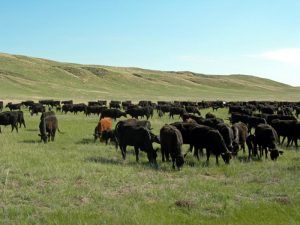
Nebraska Cattle courtesy the University of Nebraska
With the coming of the railroad, Whitman became a major cattle shipping point and special Saturday evening runs made shipping easy for the local ranchers. Sixty or more cars of beef was not an unusual train length in Whitman’s shipping heydays. There were also four passenger trains daily. By 1890, the town boasted a population of about 75 people.
“It’s a great country for cattle and men, but hell on horses and women.”
— Ellen Moran, area resident
During these early years, Whitman was at a crossroads to several other areas. The road north of Whitman was once the main wagon road north to the Black Hills of South Dakota. The Whitman Barn served as a supply point for wagon trains heading to the Black Hills, the Snake River country of Idaho, and the Arkansas River to the south.
In the late 1800s, the Whitman Hotel was established, which provided rooms to the many visitors, cowboys, and ranchers who came to the area. The hotel made the headlines in early February 1900 when 17-year-old Effie Brown Robinson was shot to death by her husband in the hotel. After Jim Robinson entered a saloon in Whitman, he asked the bartender for a quart of whiskey, downed the liquor in a short time, and announced to the saloon patrons that he was going to the hotel to kill his wife. He also demanded that if anyone left the saloon, his wife wouldn’t be the only one to be killed. He then made his way to the hotel and killed Effie. The background was that Jim worked north of Whitman while his wife lived in the hotel and only came into town occasionally to see her. While he was out of town, Jim heard rumors that Effie had many admirers and may have been romantically involved with another man who lived near Hyannis, as well as another man from nearby Mullen. Because of the “scandal” of Effie’s alleged indiscretion, the jury was lenient with Robinson and sentenced him to only three years, which he only served about half of.
In the early 1900s, the Whitman Hotel cost 35¢ per night. The Kinkaid Act opened up more lands for settlement in 1904, and the village of Whitman responded to the additional population by adding new businesses. The town soon boasted two hotels, two livery stables, two doctors, two general stores, a pool hall, lumberyard, bank, photo studio, drugstore, icehouse, cattle yard, barbershop, blacksmith, and seven saloons, of which Fred Troop’s the busiest.
Over the years, Whitman declined along with the rest of Grant County. Today it is an unincorporated village. On a hill overlooking the village one-quarter mile south of town is the cemetery. The oldest grave is from 1888.
Whitman is located on Nebraska Highway 2, about 13 miles east of Hyannis.
Hyannis
Hyannis, Nebraska, the county seat of Grant County, got its start when the Chicago, Burlington & Quincy Railroad came through the area in 1887.
The first term of court for the county was held in 1887 at Hyannis, and the first case tried was for cattle stealing. There was but one store in town and no courthouse, so Judge Abbott presided over the trial outdoors.
The following year, when the railroad arrived, the town was officially laid out. A post office was established, and a railroad station was built, all of which were named after Hyannis, Massachusetts, by a railroad official. Saloons and gambling houses were first the first buildings constructed, and a lumber dealer and general merchandise stores followed. Settlers arriving at the end of the line quickly took up claims and established homes, churches, and schools.
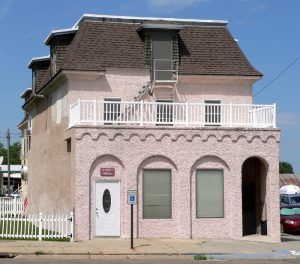
Hyannis Hotel, Hyannis, Nebraska, courtesy Wikipedia
By 1890, Hyannis boasted a population of 200, and the area was described as “one of the best stock-raising countries in the West.” It had three stores, a lumberyard, a newspaper, a drug store, blacksmith, saloon, hotel, and a livery.
In 1898 another hotel was built by Sherman Sears called the Hotel DeFair or the Hyannis Hotel, which still stands today at Nebraska Highway 2 and Main Street. It was once was considered to be the best hotel and restaurant in western Nebraska. The door on the north was for men and the one on the south for women only. This was so that the women would not have to pass by the men who gathered in the lobby. The third floor was not as nice as the other floors, and these cheaper rooms were rented to cowboys, ranch hands, and other individuals he might consider less than refined. The old hotel is listed on the National Register of Historic Places today.
A new train depot was built in 1901, and Theodore Roosevelt, who became president in 1901 following the assassination of President McKinley, came through Hyannis on a special train before the 1904 presidential election. People of the county collected in full force, and many rode horseback for miles to see the president make an address from the local bandstand near the Burlington railroad tracks. He was the only president to visit in the history of the town.
The Kinkaid Act of 1904 brought a new wave of settlement as people attempted to farm the fragile Sandhills. However, once the land was plowed, the sand beneath the soil began to blow, and most farmers gave up, selling their land to large ranchers, who accumulated large tracts of land, some over 50,000 acres.
In 1907, a new Grant County Courthouse was built in Hyannis. It would serve for 50 years before it was replaced with a more modern building in 1957.
Hyannis reached its peak population in 1940 at 449 people and afterward fell throughout the following decades.
Hyannis’ fully accredited K-12 school was reorganized in 1968, serving all rural schools and several districts in Sheridan and Cherry Counties. A high school was also built at that time which continues to serve this large area.
In 1974, several old-time cowboys reminiscing in McKillipp’s Hotel in Hyannis resulted in the first “Old Timers Rodeo” planned. It was so successful that there are now 60 such groups in the United States and Canada and the National Old Time Rodeo Association that sponsors final contests all over the nation.
Unfortunately, in March 1989, an explosion and fire occurred in a building next door to the old opera house. The building, as well as a filling station and trailer home, were destroyed, and most of the other buildings in the area suffered broken windows or damage. After nearly eight hours of fighting the blaze, Miraculously, no lives were lost, but several people suffered from smoke inhalation and burns when a second explosion rocked the town.
The Hyannis Cemetery is on a hillside to the north and affords a view of the beautiful Sandhills. The oldest gravesite is from 1890.
Today, Hyannis is called home to about 190 people and continues to display several historic buildings. It is located on Nebraska Highway 2, about 13 miles west of Whitman.
Ashby
Ashby, Nebraska, an unincorporated community that started when the railroad came through, is about nine miles west of Hyannis. It was named after the town of Ashby, Massachusetts, by a railroad official.
Like the rest of the area, Ashby thrived as a rustic western cowtown in its early years and was known for several shoot-em-ups and drunken cowboys riding up and down Main Street on their horses, whooping, hollering, and carrying on.
A post office was established in February 1908. Ashby sported a blacksmith shop, a dance hall, two stores, a town hall, and three lumberyards at its peak. Later, one of the stores burned down, and one of the lumberyards was turned into a church. A steeple and addition were added in later years. The church still stands on Main Street. Another of the old lumberyards also still stands. The Ashby Town Hall is now the location of the Veterans Club.
A school that served all 12 grades was built in 1915 and continued to do so until 1930.
Though Ashby is a tiny town today, it still supports a post office.
© Kathy Weiser-Alexander/Legends of America, updated November 2021.
Also See:
Nebraska – The Cornhusker State
Sources:
Boye, Alan; The Complete Roadside Guide to Nebraska, Bison Books, 2007
Mcintosh, Charles Barron; The Nebraska Sand Hills: The Human Landscape, University of Nebraska Press, 1996
University of Nebraska-Lincoln
USGenNet


